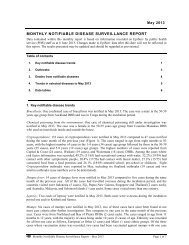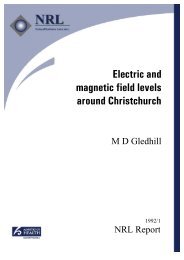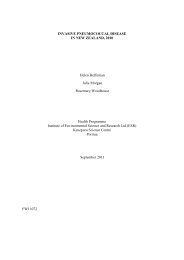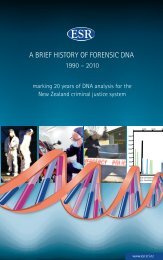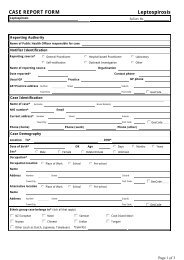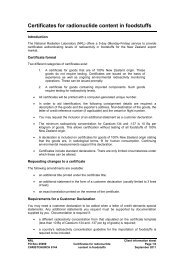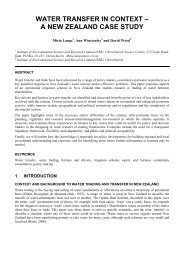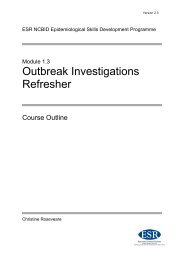environmental health indicators for new zealand: feasibility study
environmental health indicators for new zealand: feasibility study
environmental health indicators for new zealand: feasibility study
You also want an ePaper? Increase the reach of your titles
YUMPU automatically turns print PDFs into web optimized ePapers that Google loves.
2. BACKGROUNDAgenda 21 is a comprehensive plan of action adopted by more than 178 Governments at theUnited Nations Conference on Environment and Development (UNCED) held in Rio deJaneiro, Brazil, 3 to 14 June 1992. It explicitly identifies the inter-relationships of human<strong>health</strong>, the environment and development, and the need to improve <strong>health</strong> in order to achievesustainable development. Thereby providing an internationally agreed framework <strong>for</strong>embedding both <strong>environmental</strong> and <strong>health</strong> in<strong>for</strong>mation in the broader context of sustainabledevelopment.To meet this goal, development policies and programmes need access to quality data andin<strong>for</strong>mation on these differing areas, based on a clear understanding of the underpinninginter-relationships.In most countries, responsibilities <strong>for</strong> the collection, collation, and analysis of environmentand population <strong>health</strong> data are spread among different agencies, and the links between <strong>health</strong>effects and potential <strong>environmental</strong> impacts are rarely explicit. As a consequencepreventative/remediation actions are initiated with insufficient evidence.To help this, WHO-Europe have instigated a project to develop and test a pan-Europeansystem of <strong>environmental</strong> <strong>health</strong> <strong>indicators</strong> covering all the principal [physical] <strong>environmental</strong>issues of human <strong>health</strong> relevance. Initiated in October 1999 and aimed originally at theestablishment of a comprehensive EH monitoring system within the NEHAP framework andit has resulted in a proposed common “core” set of <strong>environmental</strong> <strong>health</strong> <strong>indicators</strong> and aprotocol <strong>for</strong> their pilot testing in selected countries. Eleven <strong>environmental</strong> themes wereidentified :• Air quality,• Housing,• Traffic accidents,• Noise,• Waste and contaminated lands,• Radiation,• Water and sanitation,• Food safety,• Chemical emergencies, and• Workplace.and subsequently a set of 51 “core” <strong>indicators</strong> derived <strong>for</strong> international assessments.Most of the core <strong>indicators</strong> are also applicable <strong>for</strong> use at a subnational level. The core set isthat which all countries would have the available data whereas an extended set is alsoproposed <strong>for</strong> countries with more developed monitoring systems.Environmental Health Indicators 5 18 December 2003<strong>for</strong> New Zealand




